Navid Asadizanjani
WaveFormer: A 3D Transformer with Wavelet-Driven Feature Representation for Efficient Medical Image Segmentation
Apr 01, 2025Abstract:Transformer-based architectures have advanced medical image analysis by effectively modeling long-range dependencies, yet they often struggle in 3D settings due to substantial memory overhead and insufficient capture of fine-grained local features. We address these limitations with WaveFormer, a novel 3D-transformer that: i) leverages the fundamental frequency-domain properties of features for contextual representation, and ii) is inspired by the top-down mechanism of the human visual recognition system, making it a biologically motivated architecture. By employing discrete wavelet transformations (DWT) at multiple scales, WaveFormer preserves both global context and high-frequency details while replacing heavy upsampling layers with efficient wavelet-based summarization and reconstruction. This significantly reduces the number of parameters, which is critical for real-world deployment where computational resources and training times are constrained. Furthermore, the model is generic and easily adaptable to diverse applications. Evaluations on BraTS2023, FLARE2021, and KiTS2023 demonstrate performance on par with state-of-the-art methods while offering substantially lower computational complexity.
TemporalAugmenter: An Ensemble Recurrent Based Deep Learning Approach for Signal Classification
Jan 13, 2024Abstract:Ensemble modeling has been widely used to solve complex problems as it helps to improve overall performance and generalization. In this paper, we propose a novel TemporalAugmenter approach based on ensemble modeling for augmenting the temporal information capturing for long-term and short-term dependencies in data integration of two variations of recurrent neural networks in two learning streams to obtain the maximum possible temporal extraction. Thus, the proposed model augments the extraction of temporal dependencies. In addition, the proposed approach reduces the preprocessing and prior stages of feature extraction, which reduces the required energy to process the models built upon the proposed TemporalAugmenter approach, contributing towards green AI. Moreover, the proposed model can be simply integrated into various domains including industrial, medical, and human-computer interaction applications. Our proposed approach empirically evaluated the speech emotion recognition, electrocardiogram signal, and signal quality examination tasks as three different signals with varying complexity and different temporal dependency features.
Framework for Automatic PCB Marking Detection and Recognition for Hardware Assurance
Jul 24, 2023Abstract:A Bill of Materials (BoM) is a list of all components on a printed circuit board (PCB). Since BoMs are useful for hardware assurance, automatic BoM extraction (AutoBoM) is of great interest to the government and electronics industry. To achieve a high-accuracy AutoBoM process, domain knowledge of PCB text and logos must be utilized. In this study, we discuss the challenges associated with automatic PCB marking extraction and propose 1) a plan for collecting salient PCB marking data, and 2) a framework for incorporating this data for automatic PCB assurance. Given the proposed dataset plan and framework, subsequent future work, implications, and open research possibilities are detailed.
In-Situ Thickness Measurement of Die Silicon Using Voltage Imaging for Hardware Assurance
Jul 24, 2023Abstract:Hardware assurance of electronics is a challenging task and is of great interest to the government and the electronics industry. Physical inspection-based methods such as reverse engineering (RE) and Trojan scanning (TS) play an important role in hardware assurance. Therefore, there is a growing demand for automation in RE and TS. Many state-of-the-art physical inspection methods incorporate an iterative imaging and delayering workflow. In practice, uniform delayering can be challenging if the thickness of the initial layer of material is non-uniform. Moreover, this non-uniformity can reoccur at any stage during delayering and must be corrected. Therefore, it is critical to evaluate the thickness of the layers to be removed in a real-time fashion. Our proposed method uses electron beam voltage imaging, image processing, and Monte Carlo simulation to measure the thickness of remaining silicon to guide a uniform delayering process
Speech Emotion Recognition using Supervised Deep Recurrent System for Mental Health Monitoring
Aug 26, 2022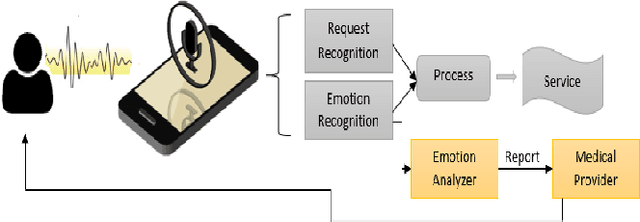
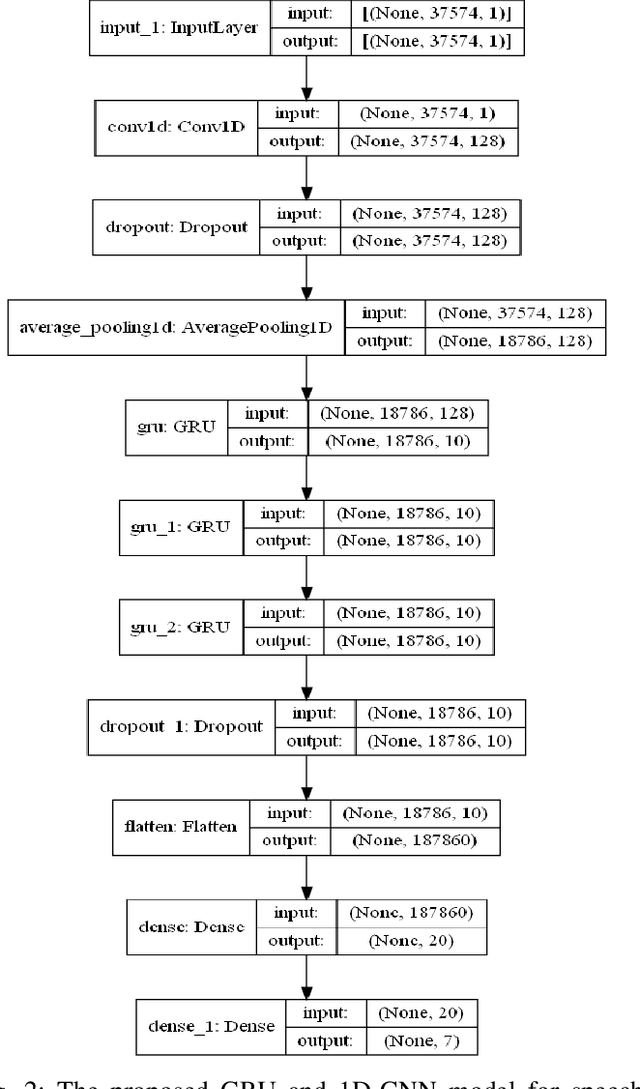
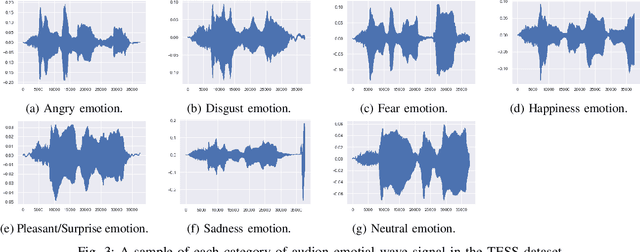
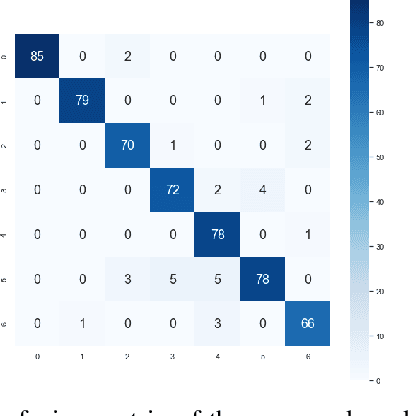
Abstract:Understanding human behavior and monitoring mental health are essential to maintaining the community and society's safety. As there has been an increase in mental health problems during the COVID-19 pandemic due to uncontrolled mental health, early detection of mental issues is crucial. Nowadays, the usage of Intelligent Virtual Personal Assistants (IVA) has increased worldwide. Individuals use their voices to control these devices to fulfill requests and acquire different services. This paper proposes a novel deep learning model based on the gated recurrent neural network and convolution neural network to understand human emotion from speech to improve their IVA services and monitor their mental health.
EVHA: Explainable Vision System for Hardware Testing and Assurance -- An Overview
Jul 20, 2022



Abstract:Due to the ever-growing demands for electronic chips in different sectors the semiconductor companies have been mandated to offshore their manufacturing processes. This unwanted matter has made security and trustworthiness of their fabricated chips concerning and caused creation of hardware attacks. In this condition, different entities in the semiconductor supply chain can act maliciously and execute an attack on the design computing layers, from devices to systems. Our attack is a hardware Trojan that is inserted during mask generation/fabrication in an untrusted foundry. The Trojan leaves a footprint in the fabricated through addition, deletion, or change of design cells. In order to tackle this problem, we propose Explainable Vision System for Hardware Testing and Assurance (EVHA) in this work that can detect the smallest possible change to a design in a low-cost, accurate, and fast manner. The inputs to this system are Scanning Electron Microscopy (SEM) images acquired from the Integrated Circuits (ICs) under examination. The system output is determination of IC status in terms of having any defect and/or hardware Trojan through addition, deletion, or change in the design cells at the cell-level. This article provides an overview on the design, development, implementation, and analysis of our defense system.
PCB Component Detection using Computer Vision for Hardware Assurance
Feb 17, 2022
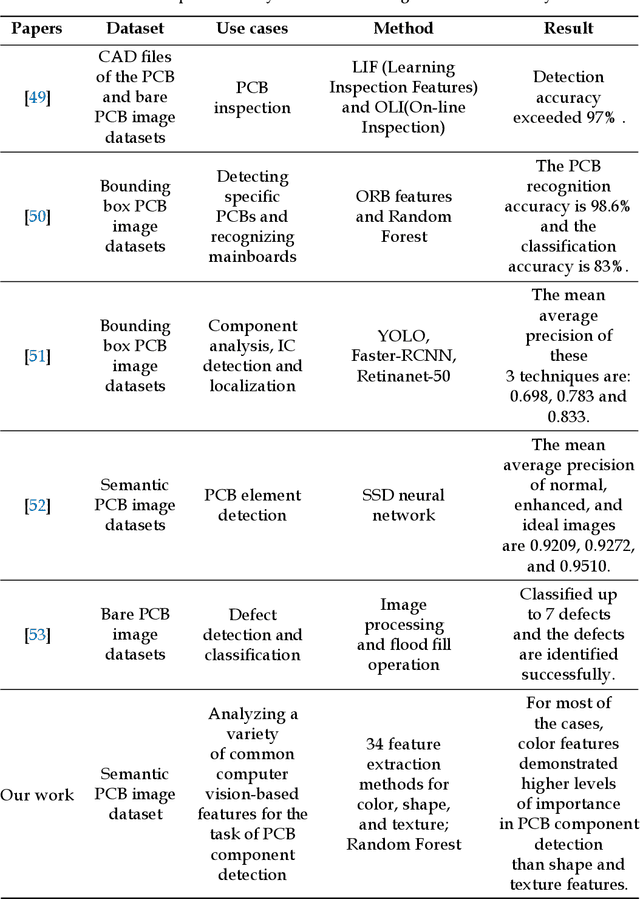
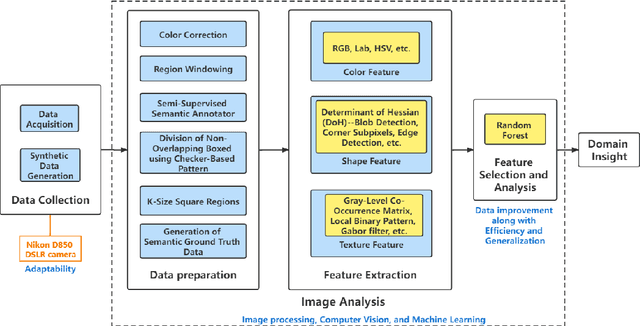
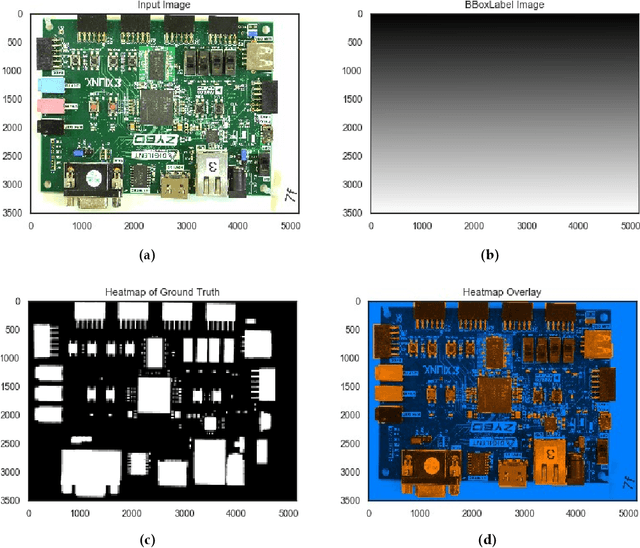
Abstract:Printed Circuit Board (PCB) assurance in the optical domain is a crucial field of study. Though there are many existing PCB assurance methods using image processing, computer vision (CV), and machine learning (ML), the PCB field is complex and increasingly evolving so new techniques are required to overcome the emerging problems. Existing ML-based methods outperform traditional CV methods, however they often require more data, have low explainability, and can be difficult to adapt when a new technology arises. To overcome these challenges, CV methods can be used in tandem with ML methods. In particular, human-interpretable CV algorithms such as those that extract color, shape, and texture features increase PCB assurance explainability. This allows for incorporation of prior knowledge, which effectively reduce the number of trainable ML parameters and thus, the amount of data needed to achieve high accuracy when training or retraining an ML model. Hence, this study explores the benefits and limitations of a variety of common computer vision-based features for the task of PCB component detection using semantic data. Results of this study indicate that color features demonstrate promising performance for PCB component detection. The purpose of this paper is to facilitate collaboration between the hardware assurance, computer vision, and machine learning communities.
FPIC: A Novel Semantic Dataset for Optical PCB Assurance
Feb 17, 2022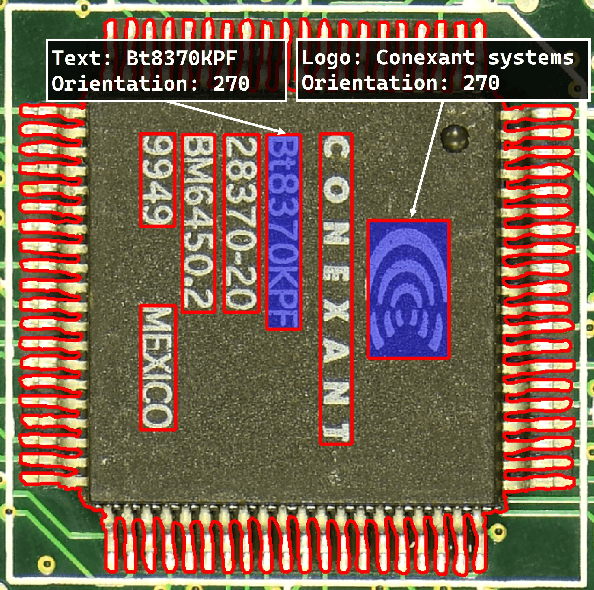
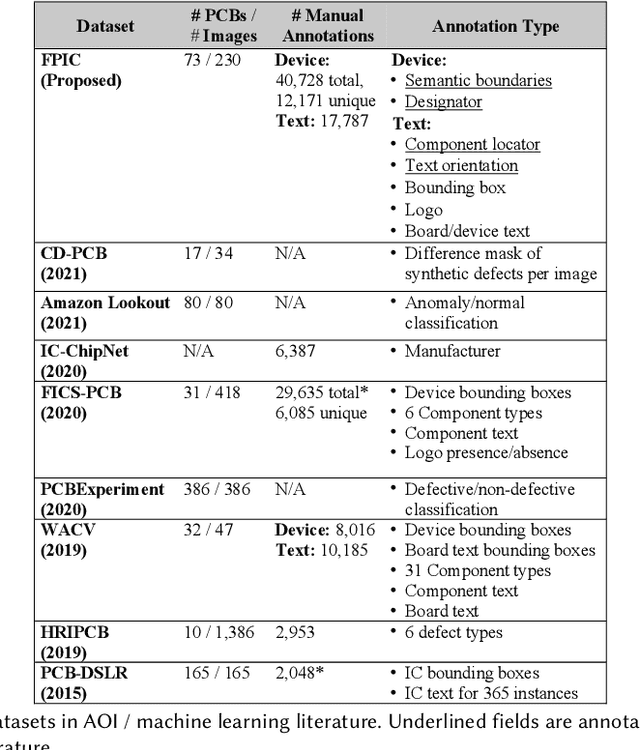
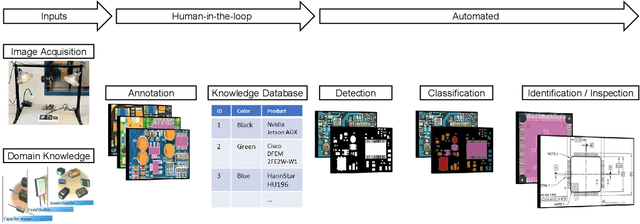
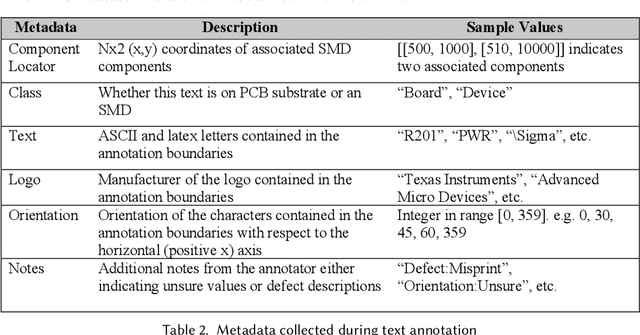
Abstract:The continued outsourcing of printed circuit board (PCB) fabrication to overseas venues necessitates increased hardware assurance capabilities. Toward this end, several automated optical inspection (AOI) techniques have been proposed in the past exploring various aspects of PCB images acquired using digital cameras. In this work, we review state-of-the-art AOI techniques and observed the strong, rapid trend toward machine learning (ML) solutions. These require significant amounts of labeled ground truth data, which is lacking in the publicly available PCB data space. We propose the FICS PBC Image Collection (FPIC) dataset to address this bottleneck in available large-volume, diverse, semantic annotations. Additionally, this work covers the potential increase in hardware security capabilities and observed methodological distinctions highlighted during data collection.
Histogram-based Auto Segmentation: A Novel Approach to Segmenting Integrated Circuit Structures from SEM Images
Apr 28, 2020



Abstract:In the Reverse Engineering and Hardware Assurance domain, a majority of the data acquisition is done through electron microscopy techniques such as Scanning Electron Microscopy (SEM). However, unlike its counterparts in optical imaging, only a limited number of techniques are available to enhance and extract information from the raw SEM images. In this paper, we introduce an algorithm to segment out Integrated Circuit (IC) structures from the SEM image. Unlike existing algorithms discussed in this paper, this algorithm is unsupervised, parameter-free and does not require prior information on the noise model or features in the target image making it effective in low quality image acquisition scenarios as well. Furthermore, the results from the application of the algorithm on various structures and layers in the IC are reported and discussed.
 Add to Chrome
Add to Chrome Add to Firefox
Add to Firefox Add to Edge
Add to Edge